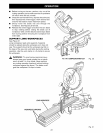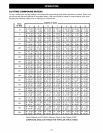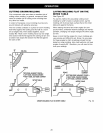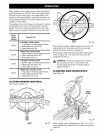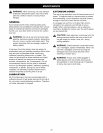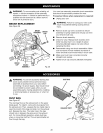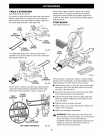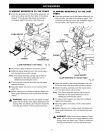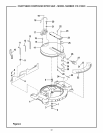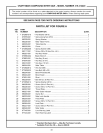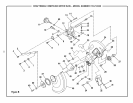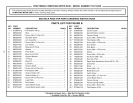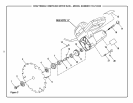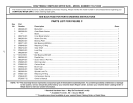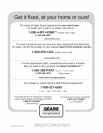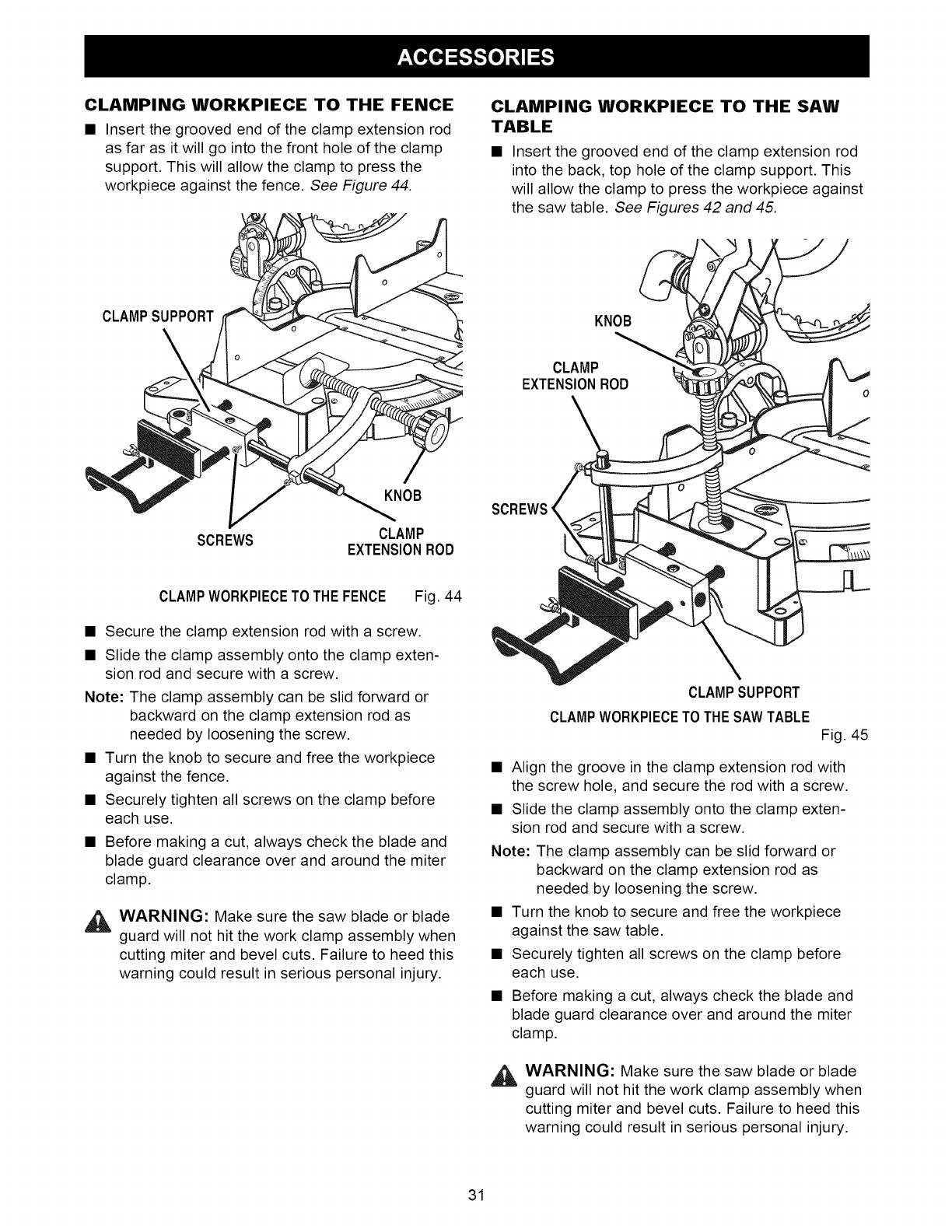
CLAMPING WORKPIECE TO THE FENCE
Insert the grooved end of the clamp extension rod
as far as it will go into the front hole of the clamp
support. This will allow the clamp to press the
workpiece against the fence. See Figure 44.
CLAMPING WORKPIECE TO THE SAW
TABLE
Insert the grooved end of the clamp extension rod
into the back, top hole of the clamp support. This
will allow the clamp to press the workpiece against
the saw table. See Figures 42 and 45.
CLAMPSUPPORT
KNOB
CLAMP
EXTENSIONROD
SCREWS
KNOB
CLAMP
EXTENSIONROD
CLAMPWORKPIECETO THEFENCE Fig. 44
• Secure the clamp extension rod with a screw.
• Slide the clamp assembly onto the clamp exten-
sion rod and secure with a screw.
Note: The clamp assembly can be slid forward or
backward on the clamp extension rod as
needed by loosening the screw.
• Turn the knob to secure and free the workpiece
against the fence.
• Securely tighten all screws on the clamp before
each use.
• Before making a cut, always check the blade and
blade guard clearance over and around the miter
clamp.
_1_ WARNING: Make sure the saw blade or blade
guard will not hit the work clamp assembly when
cutting miter and bevel cuts. Failure to heed this
warning could result in serious personal injury.
SCREWS
CLAMPSUPPORT
CLAMPWORKPIECETOTHESAWTABLE
Fig. 45
• Align the groove in the clamp extension rod with
the screw hole, and secure the rod with a screw.
• Slide the clamp assembly onto the clamp exten-
sion rod and secure with a screw.
Note: The clamp assembly can be slid forward or
backward on the clamp extension rod as
needed by loosening the screw.
• Turn the knob to secure and free the workpiece
against the saw table.
• Securely tighten all screws on the clamp before
each use.
• Before making a cut, always check the blade and
blade guard clearance over and around the miter
clamp.
WARNING: Make sure the saw blade or blade
guard will not hit the work clamp assembly when
cutting miter and bevel cuts. Failure to heed this
warning could result in serious personal injury.
31



